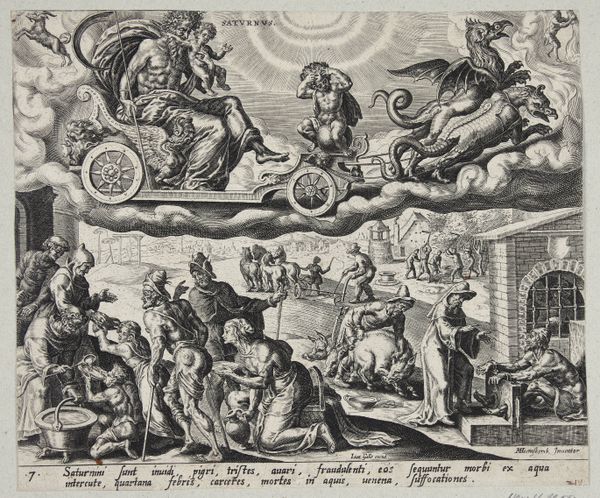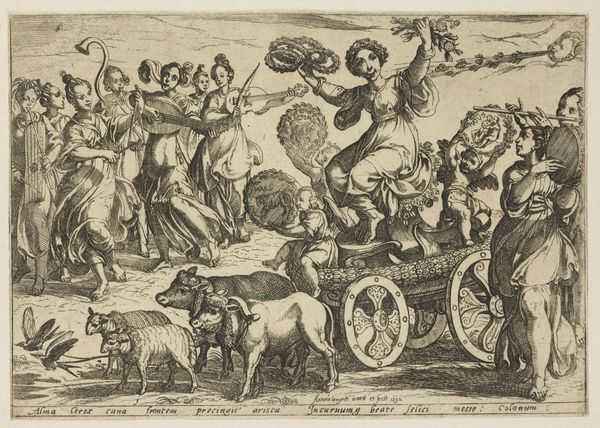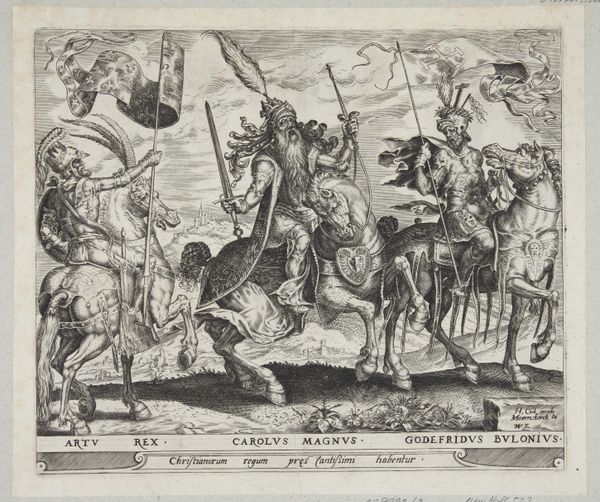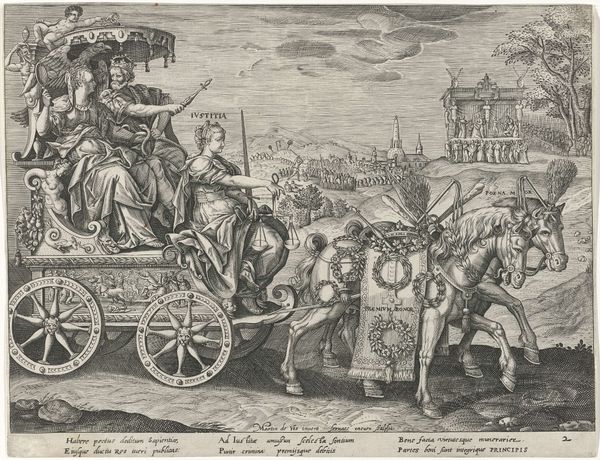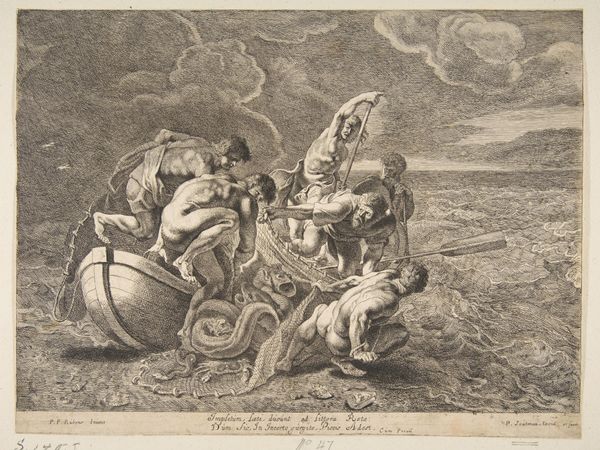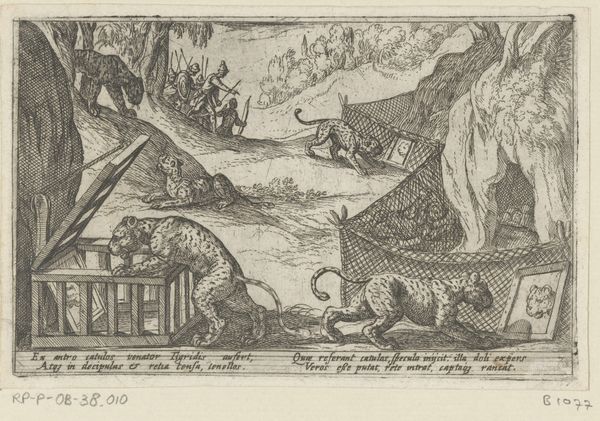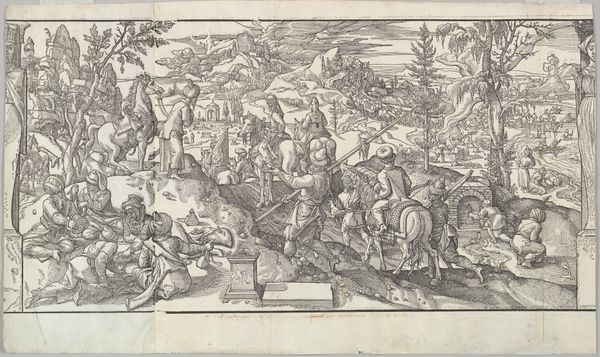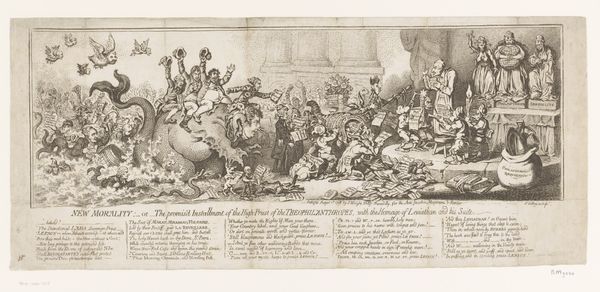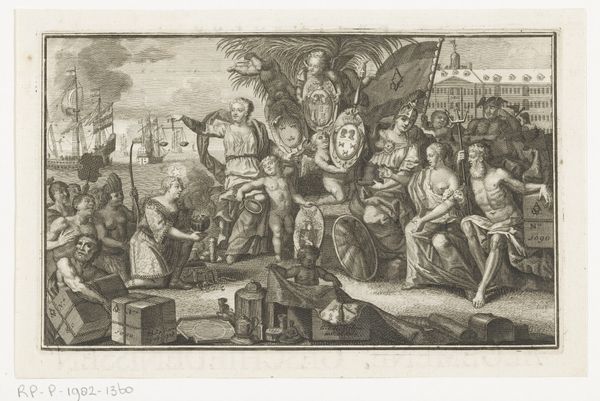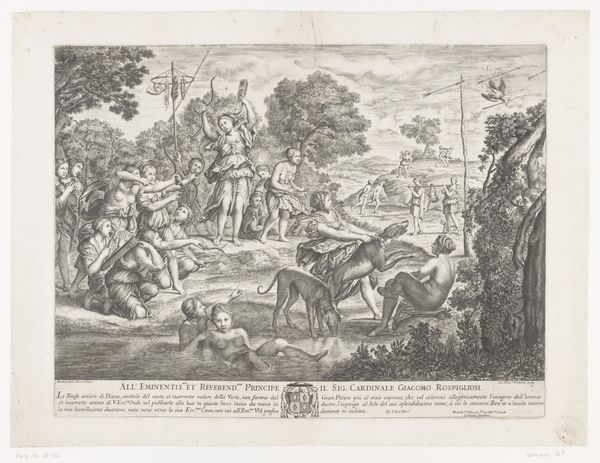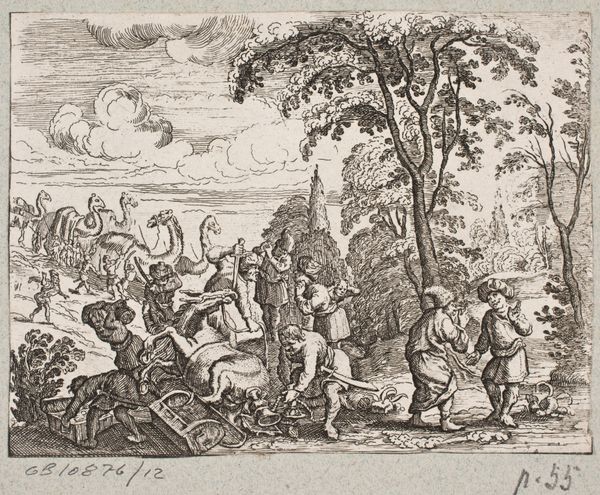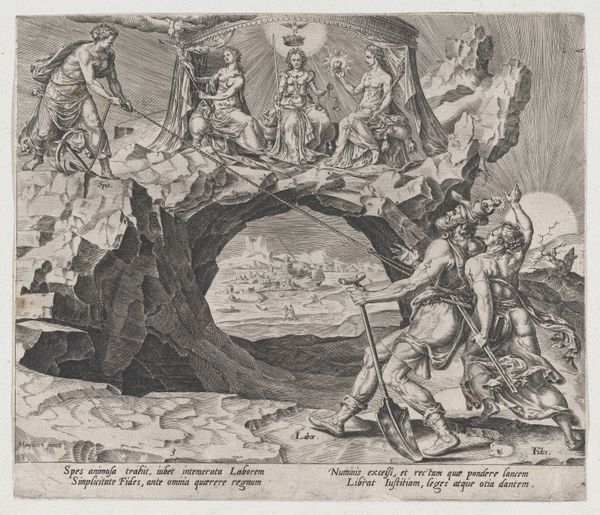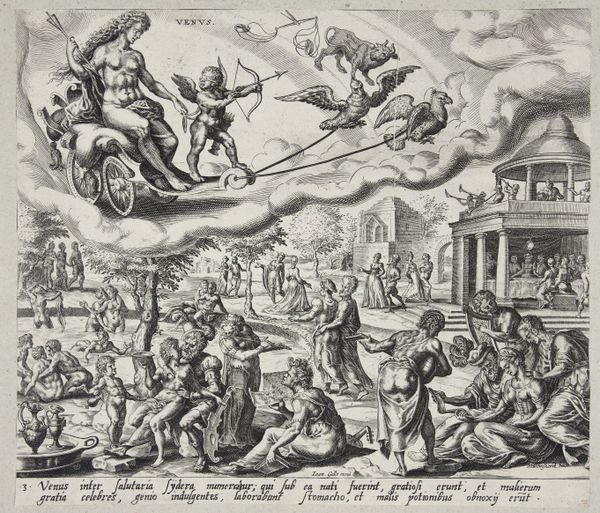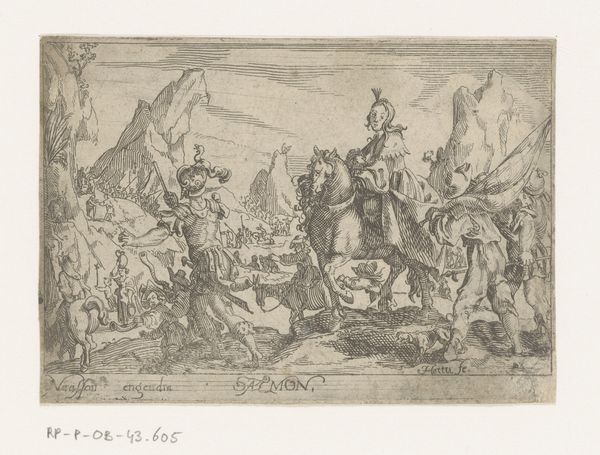
drawing, print, engraving
#
drawing
#
ink drawing
#
allegory
#
animal
# print
#
figuration
#
history-painting
#
engraving
Dimensions: sheet: 7 13/16 x 13 3/4 in. (19.9 x 34.9 cm)
Copyright: Public Domain
Curator: Ah, "The Triumph of Modern Art," a work attributed to Jean Barbault, dating somewhere between 1715 and 1766. It's an engraving—intricate, isn't it? Editor: Intricate is one word! Overwhelming comes to mind first. There's so much happening; it's like a fever dream meticulously etched in ink. What am I even looking at? Curator: Well, we're looking at an allegorical scene. The print fairly brims with symbolic references. Note the procession, the chariot, the figures both earthly and divine…all classic tropes deployed to suggest a kind of grand narrative. Consider that winged figure blowing the trumpet: what cultural weight does that kind of annunciatory imagery carry? How far back does it reach? Editor: The trumpet… right. It’s like art is being heralded or something. But is that figure riding a centaur? It all feels a bit… much. I’m getting Baroque overload. Still, even beneath all this pomp, there's something slightly comical about it all, the sheer density borders on parody. I imagine you are suggesting that "Triumph" can also hint toward more than simply progress? Curator: Precisely. Look closer. See the contrast between the figures ascending towards the light, and the earthly figures grappling below. Is it a "triumph" for everyone, or only a select few elevated above the chaos? Perhaps Barbault is slyly questioning the very notion of linear progress. History isn't a straight line. The ascent of modernity inevitably brings displacement and disintegration. Editor: So, not just a straightforward celebration, then? More like a nuanced commentary dressed up as… well, a very busy party. And the animals present? Curator: Consider the strategic function animals perform in the visual language of allegory. Each selected creature introduces associations. Whether fidelity, strength, or wisdom…the animal becomes another device through which abstract meanings are materialized into more graspable forms. Editor: Materialized meanings. Yes, I think I needed you to help translate the dream. The work as a whole now feels more interesting—more complex. Thanks! Curator: It's a dialogue, isn't it? Between past and present, chaos and order, aspiration and reality. "The Triumph of Modern Art" seems to relish in that complexity, the glorious contradictions of civilization.
Comments
No comments
Be the first to comment and join the conversation on the ultimate creative platform.
